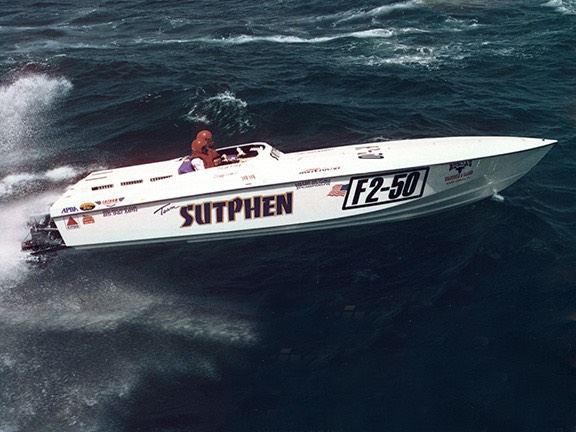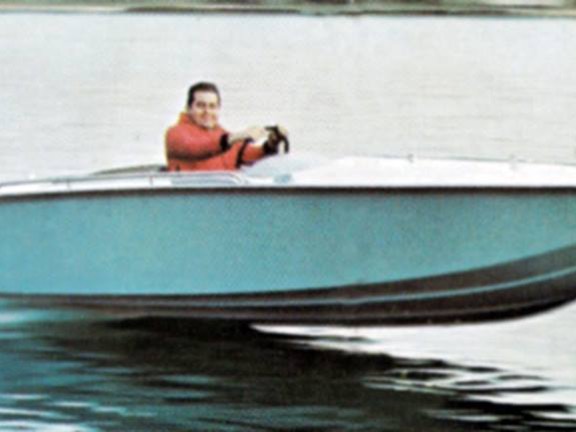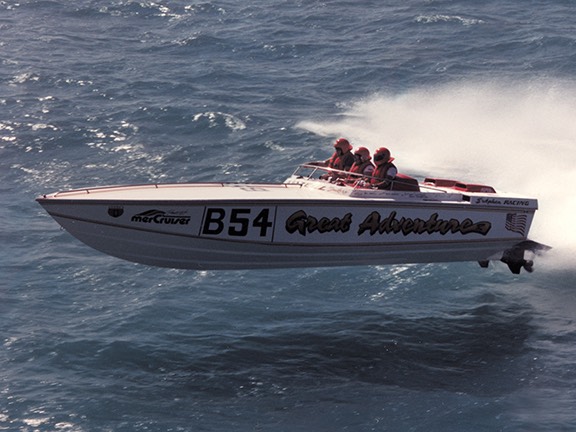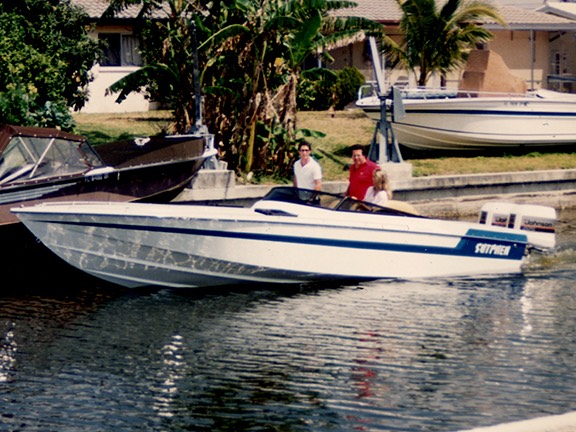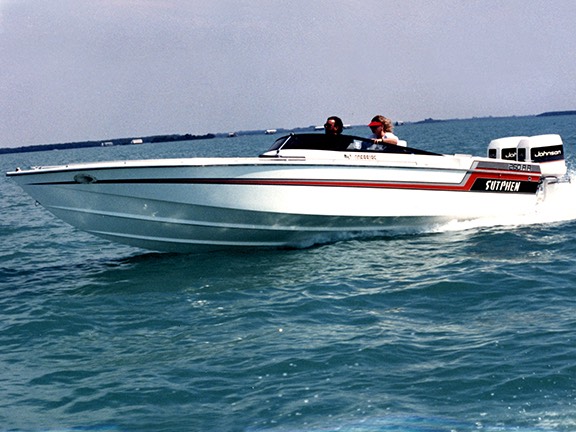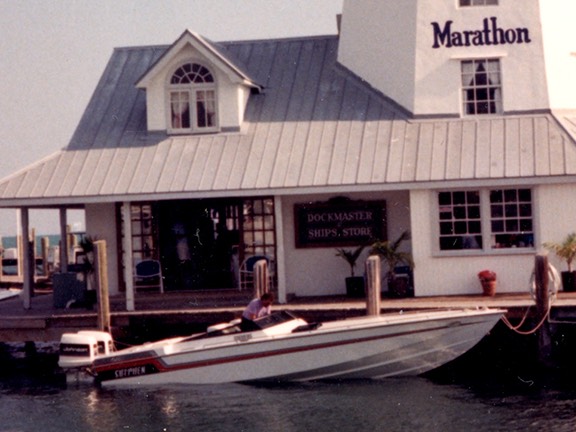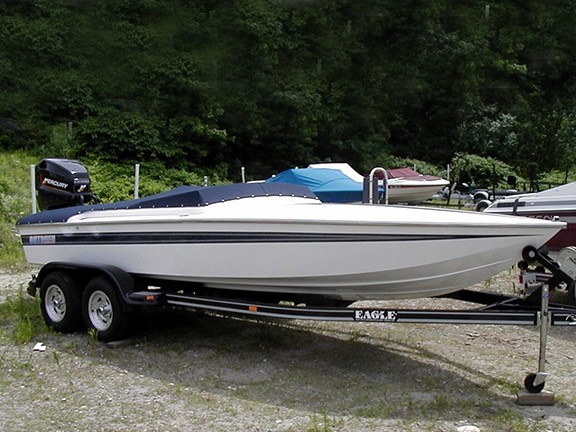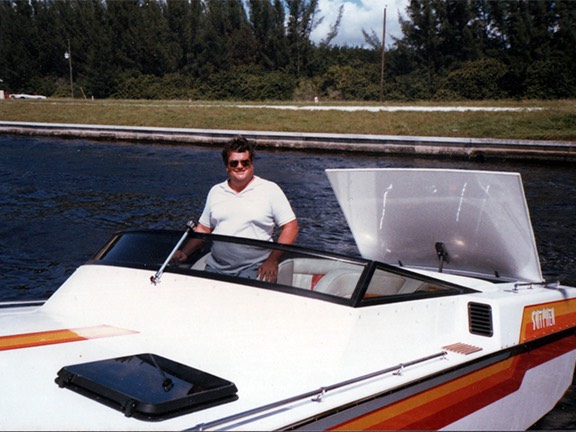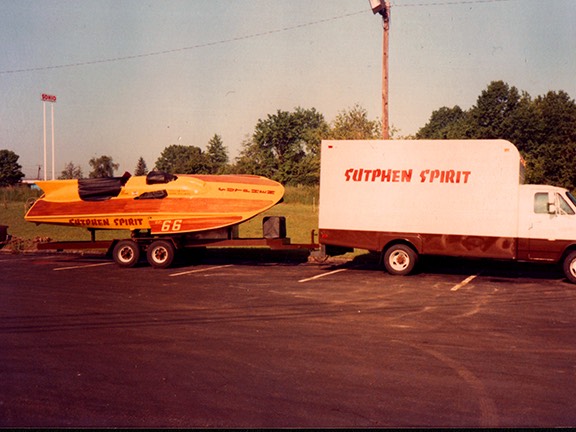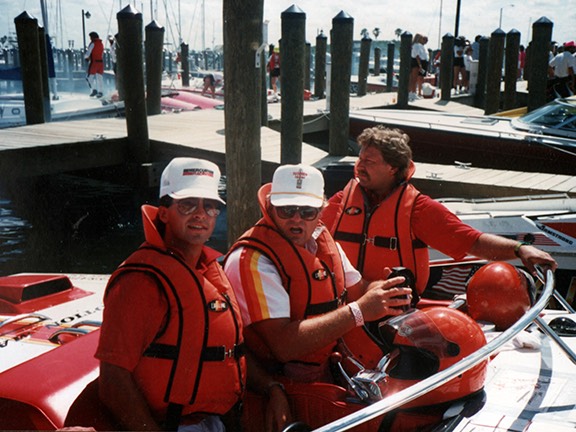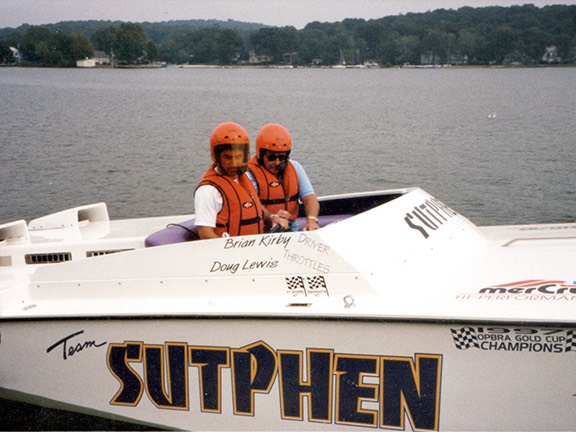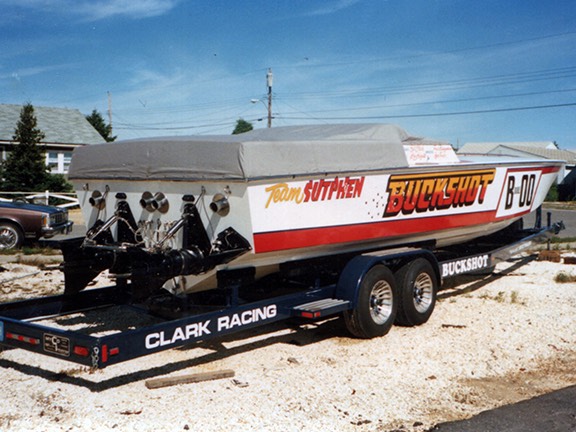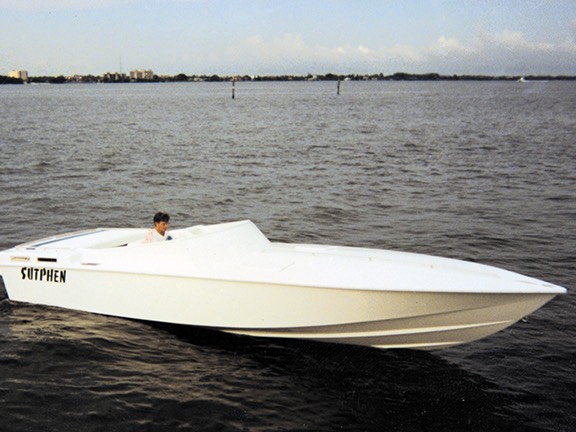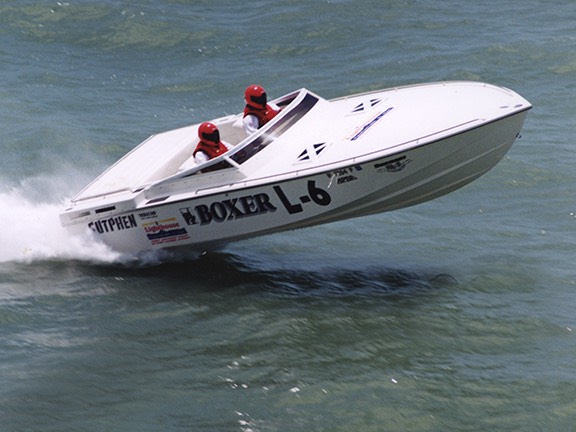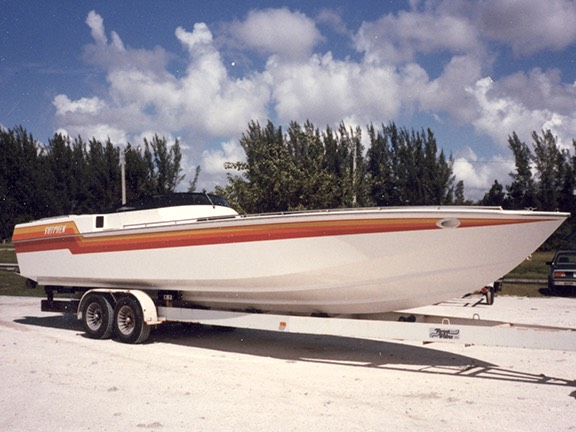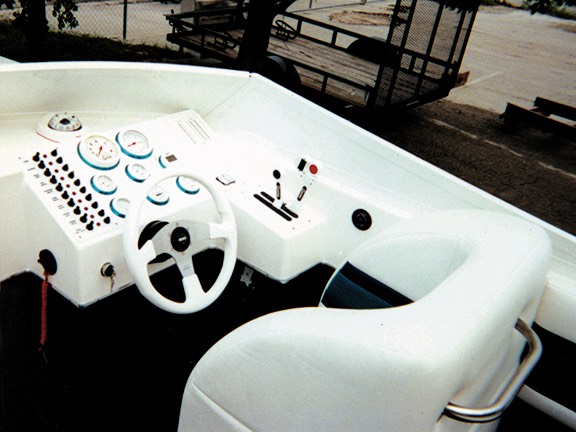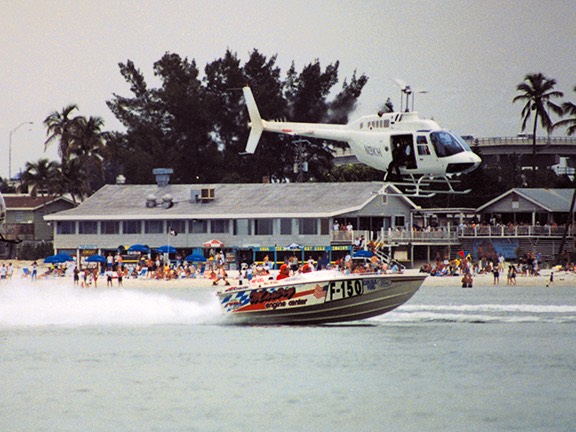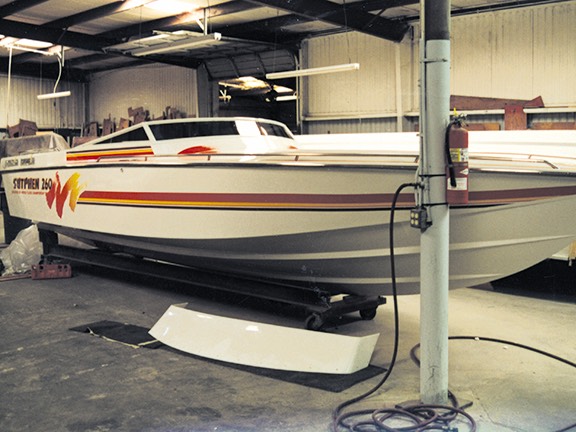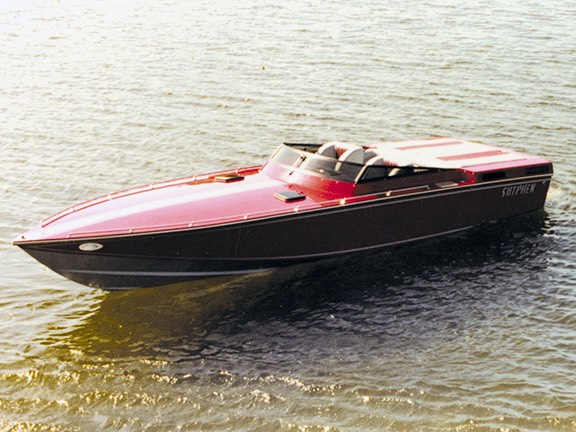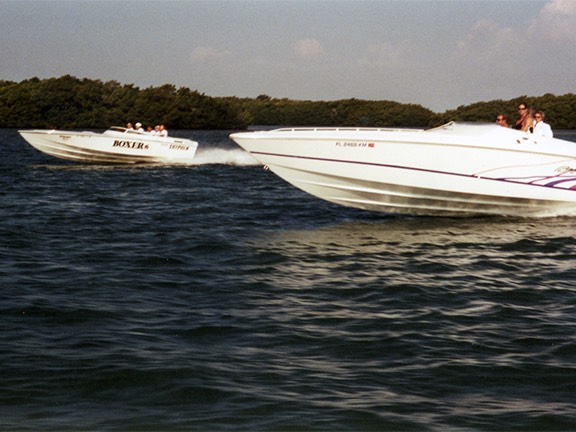IN THE BEGINNING
In the annals of boating, the name Sutphen is as old as the weathered hull of early sailing ships. It's a name that traces back at least five generations to origins in Holland.
In this country, three generations ago Henry R. Sutphen gave the name real meaning. As vice president of Elco, America's leading builder of cruise boats in Bayonne, N.J., he was one of a select group of boat builders the British called upon for naval defense advice.
The year was 1915. And it was apparent that the British were taking the brunt of the German's submarine force. Sutphen suggested the British outfit themselves with a substantial number of armed, high-speed 80-foot motor launches(MLs). The British liked the idea-so much that they ordered 50 such boats...provided Sutphen's firm could deliver all of them within the year.
An order that size is enough to give pause to any shipbuilder, and especially so 60 years ago. Even today, large boat builders rarely turn out more than two boats per week.
Just 20 days after signing a contract with Elco, the "Lusitania" was sunk and the British upped their order to 550 boats. Sutphen and Elco made history that year-not only building, but launching, sea testing and delivering 550 boats within 488 working days.
Later, during World War II, Henry Sutphen was again called upon to design efficient high-speed torpedo boats and the Elco team turned them out by the hundreds. This time they were for the U.S. Navy, and one of them included John Kennedy's PT 109.
Among the shipbuilders at Elco at the time was another family member, Samuel Sutphen, a young married man and father of a small son, Richard.
After the war ended, the ardent wish of almost everyone was a quick return to normalcy. People wanted to pick up their lives where they'd left off before the war turned things upside down. For Sam Sutphen, the answer was in owning his own marina where he could build any kind of boat he wanted at his own speed.
There on Lake Hopatcong in New Jersey, he turned out fishing boats, sail boats, speed boats...even an occasional barge. And inevitably by his side was his growing son Richie.
In this country, three generations ago Henry R. Sutphen gave the name real meaning. As vice president of Elco, America's leading builder of cruise boats in Bayonne, N.J., he was one of a select group of boat builders the British called upon for naval defense advice.
The year was 1915. And it was apparent that the British were taking the brunt of the German's submarine force. Sutphen suggested the British outfit themselves with a substantial number of armed, high-speed 80-foot motor launches(MLs). The British liked the idea-so much that they ordered 50 such boats...provided Sutphen's firm could deliver all of them within the year.
An order that size is enough to give pause to any shipbuilder, and especially so 60 years ago. Even today, large boat builders rarely turn out more than two boats per week.
Just 20 days after signing a contract with Elco, the "Lusitania" was sunk and the British upped their order to 550 boats. Sutphen and Elco made history that year-not only building, but launching, sea testing and delivering 550 boats within 488 working days.
Later, during World War II, Henry Sutphen was again called upon to design efficient high-speed torpedo boats and the Elco team turned them out by the hundreds. This time they were for the U.S. Navy, and one of them included John Kennedy's PT 109.
Among the shipbuilders at Elco at the time was another family member, Samuel Sutphen, a young married man and father of a small son, Richard.
After the war ended, the ardent wish of almost everyone was a quick return to normalcy. People wanted to pick up their lives where they'd left off before the war turned things upside down. For Sam Sutphen, the answer was in owning his own marina where he could build any kind of boat he wanted at his own speed.
There on Lake Hopatcong in New Jersey, he turned out fishing boats, sail boats, speed boats...even an occasional barge. And inevitably by his side was his growing son Richie.
The two progressed together in time-honored tradition, father and son, elder teaching younger. The younger, like a sponge, soaked up everything his father had to show him about building wooden boats. Along the way, Richie grew up. And then, it was almost simultaneous, a new method of building boats was introduced-fiberglass.
"When fiberglass hit the market I started racing skiboats, then hydros. In the late '60s, I ran all over the country racing hydros," he recalls.
Richie propelled boats that shot down a smooth chute at 165 miles per hour. He set records, blew engines, won titles...and loved every thrilling moment of it. But as far as the workaday work was concerned, he continued to work out of his father's marina building wooden hulls until 1965.
It was then that he made the decision to break away and devote all of his time and energies to manufacturing fiberglass boats. Since then Richie has built nearly 1,000, the largest number of them pleasure boats. But Richie Sutphen's notoriety was to come, not from small fiberglass pleasure boats but from an innate ability to design high performance fiberglass offshore race hulls
"When fiberglass hit the market I started racing skiboats, then hydros. In the late '60s, I ran all over the country racing hydros," he recalls.
Richie propelled boats that shot down a smooth chute at 165 miles per hour. He set records, blew engines, won titles...and loved every thrilling moment of it. But as far as the workaday work was concerned, he continued to work out of his father's marina building wooden hulls until 1965.
It was then that he made the decision to break away and devote all of his time and energies to manufacturing fiberglass boats. Since then Richie has built nearly 1,000, the largest number of them pleasure boats. But Richie Sutphen's notoriety was to come, not from small fiberglass pleasure boats but from an innate ability to design high performance fiberglass offshore race hulls
It wasn't until sometime in 1971, he says, that he hit upon the idea of designing ocean racers. These would require a different kind of hull-one specially designed for speed and durability. He mulled the idea over for several years, but didn't begin building an offshore boat until 1974 when he moved his operation to Cape Coral, Florida. Richie was 32.
Richie acknowledges the move from the lakes up north to the choppy waters of the Gulf of Mexico were probably responsible for his advent into offshore racing. But at the time, his reason for moving was "to get away from the crummy winter weather" and his intent was to build pleasure boats.
His shift to designing and building durable offshore racing machines met with quick success. Richie Sutphen readily became recognized nationally as one of the foremost designers and builders of ocean racing boats-in one year alone, 1979, a Sutphen boat won nine consecutive races sanctioned by the American Powerboat Association...a record unparalleled in offshore racing history.
The boat, "Great Adventure", topped the Division II (Production Class) National Championship and subsequently won the overall National Performance Championship title. Another Sutphen boat, "Inferno", "Inferno", won the Division I (Sport Class) National Championship and finished second overall to Great Adventure. The following year another Sutphen-built boat, "Busch", ran away with another national & world crown-this time the Modified Class. And those were just the beginning.
Richie acknowledges the move from the lakes up north to the choppy waters of the Gulf of Mexico were probably responsible for his advent into offshore racing. But at the time, his reason for moving was "to get away from the crummy winter weather" and his intent was to build pleasure boats.
His shift to designing and building durable offshore racing machines met with quick success. Richie Sutphen readily became recognized nationally as one of the foremost designers and builders of ocean racing boats-in one year alone, 1979, a Sutphen boat won nine consecutive races sanctioned by the American Powerboat Association...a record unparalleled in offshore racing history.
The boat, "Great Adventure", topped the Division II (Production Class) National Championship and subsequently won the overall National Performance Championship title. Another Sutphen boat, "Inferno", "Inferno", won the Division I (Sport Class) National Championship and finished second overall to Great Adventure. The following year another Sutphen-built boat, "Busch", ran away with another national & world crown-this time the Modified Class. And those were just the beginning.
Sutphens are unique not only because of their performance but because they're structurally more sound. Their hull strength and superior design make them infinitely more seaworthy. "The real difference is in the bottom of the boat," Richie's says.
The most unique aspect of Sutphen-built hulls is Richie's own special lamination method. He chooses to sandwich a layer of marine grade plywood between fiberglass laminates in the bottom of the boat. He also uses aerospace composite materials in the gunnels and deck to maximize strength and prevent fracture under extreme impact; a technique that also helps keep weight at a minimum.
Although cost prohibitive, he believes the use of full-length stringers, bulkheads placed and bonded in strategic locations and the use of the deck and floor as an integral part of the hull, produces an exceptional performance boat-one designed to withstand the same abuse that offshore race boats are built to take on today's racing circuits.
But that's not the only difference.
"Our hulls are also designed with a deeper vee for superior performance," Richie explains. "It's a different approach-not only is it deeper, but it has to do with where the vee is."
And he knows precisely where the vee belongs on his boats although he rarely puts designs on paper. Richie Sutphen has a sixth sense when it comes to boat designs, an ability to transform design to performance. "It's all up here," he says tapping his head. "I grew up building boats."
The most unique aspect of Sutphen-built hulls is Richie's own special lamination method. He chooses to sandwich a layer of marine grade plywood between fiberglass laminates in the bottom of the boat. He also uses aerospace composite materials in the gunnels and deck to maximize strength and prevent fracture under extreme impact; a technique that also helps keep weight at a minimum.
Although cost prohibitive, he believes the use of full-length stringers, bulkheads placed and bonded in strategic locations and the use of the deck and floor as an integral part of the hull, produces an exceptional performance boat-one designed to withstand the same abuse that offshore race boats are built to take on today's racing circuits.
But that's not the only difference.
"Our hulls are also designed with a deeper vee for superior performance," Richie explains. "It's a different approach-not only is it deeper, but it has to do with where the vee is."
And he knows precisely where the vee belongs on his boats although he rarely puts designs on paper. Richie Sutphen has a sixth sense when it comes to boat designs, an ability to transform design to performance. "It's all up here," he says tapping his head. "I grew up building boats."
Sutphen offers 10 trailable models from 22 to 38 feet with larger projects under way. All the boats are based on the Sutphen championship offshore and marathon racing hulls, using the grueling race circuit as their proving ground.
Because Sutphen is a custom builder, each boat can be tailored to the customer's individual specifications-most importantly-the design, construction and rigging of each pleasure boat is given the same careful scrutiny, the same attention to detail that the Sutphen race team gives to those participating in offshore racing today.
To those who can shop in the offshore performance boat neighborhood, price should really be a secondary consideration to quality and lasting value. Comparing hull to hull, horsepower to horsepower, the Sutphen is the fastest, yet safest vee-bottom offshore performance boat being built. The record book speaks for itself-Sutphens have taken over 100 offshore racing U.S. and world championships.
And...one of the extra added beauties of owning a Sutphen is that when it's time to trade to a bigger or newer model, owners can count on a high re-sale value. Sutphens will always be an exclusive item since only a limited number are built each year.
Today, the name is carried on with custom boat builder, Richie Sutphen, JR.
Because Sutphen is a custom builder, each boat can be tailored to the customer's individual specifications-most importantly-the design, construction and rigging of each pleasure boat is given the same careful scrutiny, the same attention to detail that the Sutphen race team gives to those participating in offshore racing today.
To those who can shop in the offshore performance boat neighborhood, price should really be a secondary consideration to quality and lasting value. Comparing hull to hull, horsepower to horsepower, the Sutphen is the fastest, yet safest vee-bottom offshore performance boat being built. The record book speaks for itself-Sutphens have taken over 100 offshore racing U.S. and world championships.
And...one of the extra added beauties of owning a Sutphen is that when it's time to trade to a bigger or newer model, owners can count on a high re-sale value. Sutphens will always be an exclusive item since only a limited number are built each year.
Today, the name is carried on with custom boat builder, Richie Sutphen, JR.

